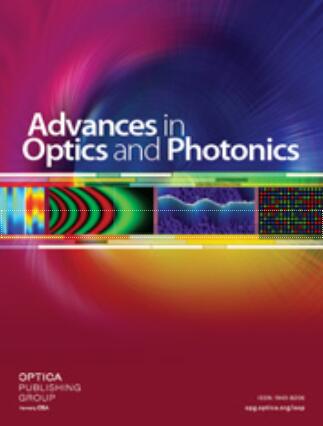基于纠缠的量子信息技术:教程
IF 23.8
1区 物理与天体物理
Q1 OPTICS
引用次数: 0
摘要
纠缠是一种典型的量子力学现象,没有经典的等价物。纠缠最早由爱因斯坦、波多尔斯基和罗森讨论,1935 年由薛定谔正式提出,现已从一场科学辩论发展成为引发技术革命的全新资源。本综述重点介绍基于纠缠的量子信息技术(QIT),特别是光子系统的基本原理和最新进展。光子是一种独特的量子信息载体,具有多种优势,例如能够在室温下运行,与现有的通信和传感基础设施兼容,以及可随时获得光学元件。光子还能与其他固态量子平台很好地对接。我们首先概述了纠缠,从历史角度介绍了纠缠的发展,然后介绍了纠缠产生的理论和相关的代表性实验。然后,我们深入探讨了基于纠缠的 QIT 在传感、成像、光谱学、数据处理和通信方面的应用。最后,我们展望了下一代基于纠缠的 QIT 的架构及其应用前景。本文章由计算机程序翻译,如有差异,请以英文原文为准。
Entanglement-based quantum information technology: a tutorial
Entanglement is a quintessential quantum mechanical phenomenon with no classical equivalent. First discussed by Einstein, Podolsky, and Rosen and formally introduced by Schrödinger in 1935, entanglement has grown from a scientific debate to a radically new resource that sparks a technological revolution. This review focuses on fundamentals and recent advances in entanglement-based quantum information technology (QIT), specifically in photonic systems. Photons are unique quantum information carriers with several advantages, such as their ability to operate at room temperature, their compatibility with existing communication and sensing infrastructures, and the availability of readily accessible optical components. Photons also interface well with other solid-state quantum platforms. We first provide an overview on entanglement, starting with an introduction to its development from a historical perspective followed by the theory for entanglement generation and the associated representative experiments. We then dive into the applications of entanglement-based QIT for sensing, imaging, spectroscopy, data processing, and communication. Before closing, we present an outlook for the architecture of the next-generation entanglement-based QIT and its prospective applications.
求助全文
通过发布文献求助,成功后即可免费获取论文全文。
去求助
来源期刊

Advances in Optics and Photonics
OPTICS-
CiteScore
56.60
自引率
0.00%
发文量
13
期刊介绍:
Advances in Optics and Photonics (AOP) is an all-electronic journal that publishes comprehensive review articles and multimedia tutorials. It is suitable for students, researchers, faculty, business professionals, and engineers interested in optics and photonics. The content of the journal covers advancements in these fields, ranging from fundamental science to engineering applications.
The journal aims to capture the most significant developments in optics and photonics. It achieves this through long review articles and comprehensive tutorials written by prominent and respected authors who are at the forefront of their fields.
The journal goes beyond traditional text-based articles by enhancing the content with multimedia elements, such as animation and video. This multimedia approach helps to enhance the understanding and visualization of complex concepts.
AOP offers dedicated article preparation and peer-review support to assist authors throughout the publication process. This support ensures that the articles meet the journal's standards and are well-received by readers.
Additionally, AOP welcomes comments on published review articles, encouraging further discussions and insights from the scientific community.
In summary, Advances in Optics and Photonics is a comprehensive journal that provides authoritative and accessible content on advancements in optics and photonics. With its diverse range of articles, multimedia enhancements, and dedicated support, AOP serves as a valuable resource for professionals and researchers in these fields.
 求助内容:
求助内容: 应助结果提醒方式:
应助结果提醒方式:


